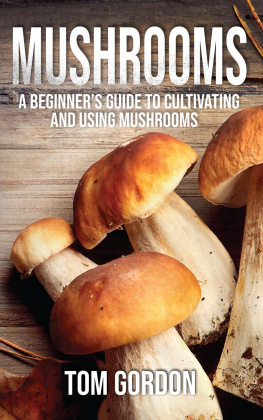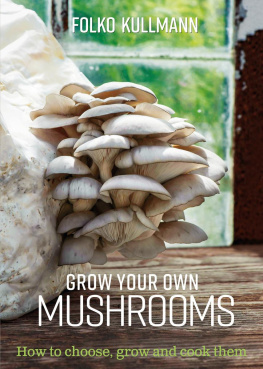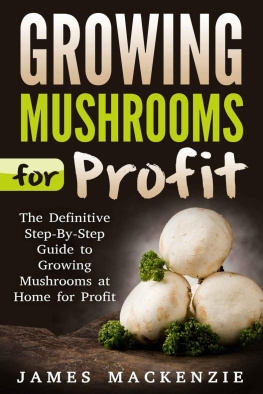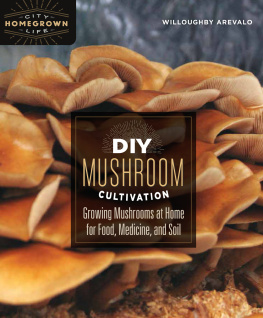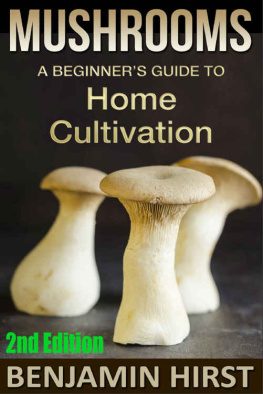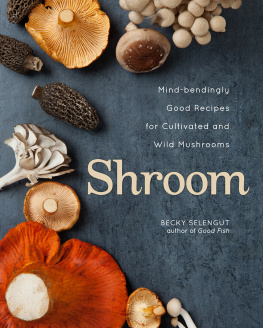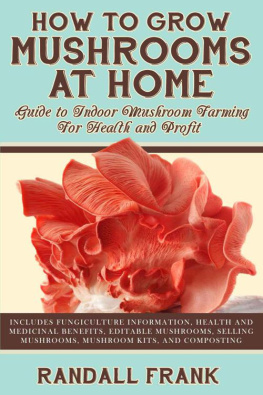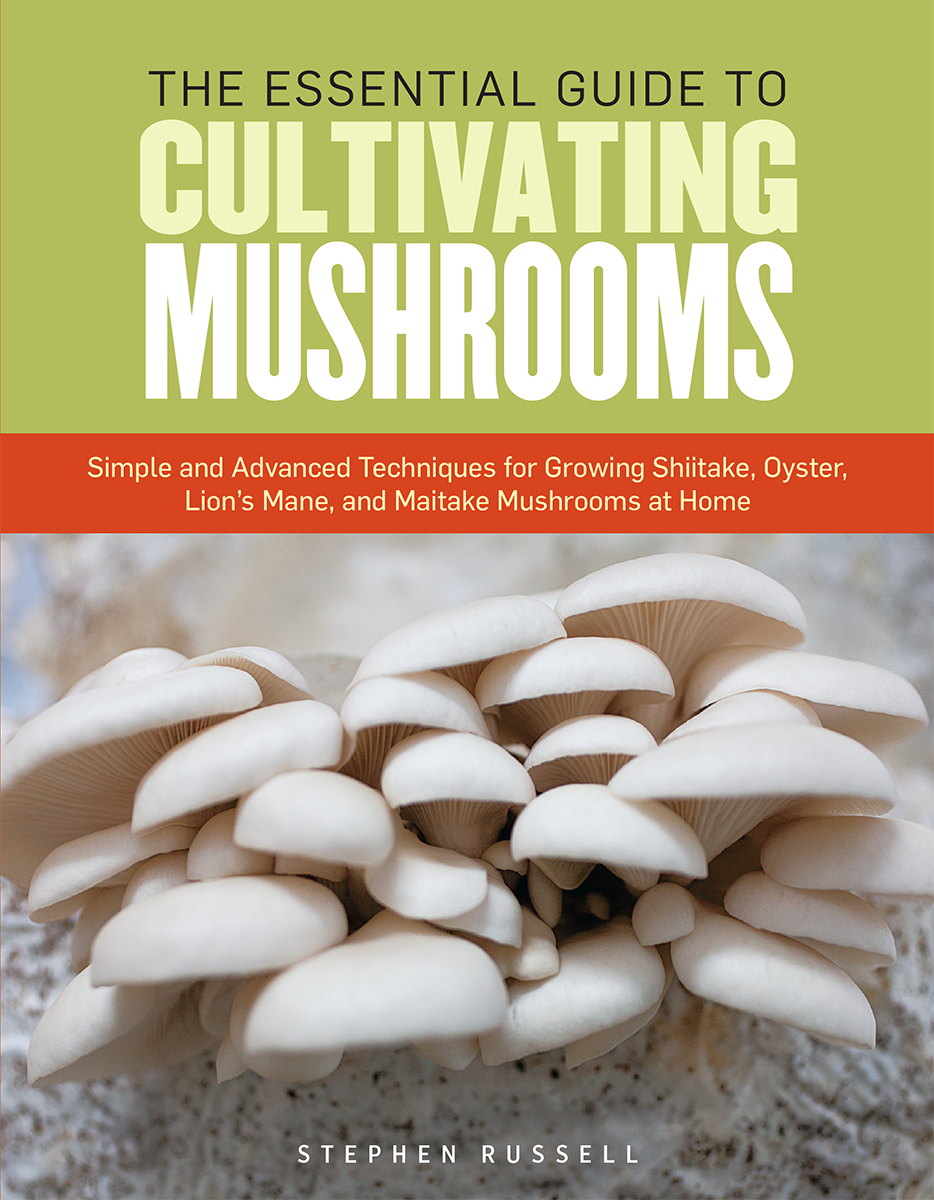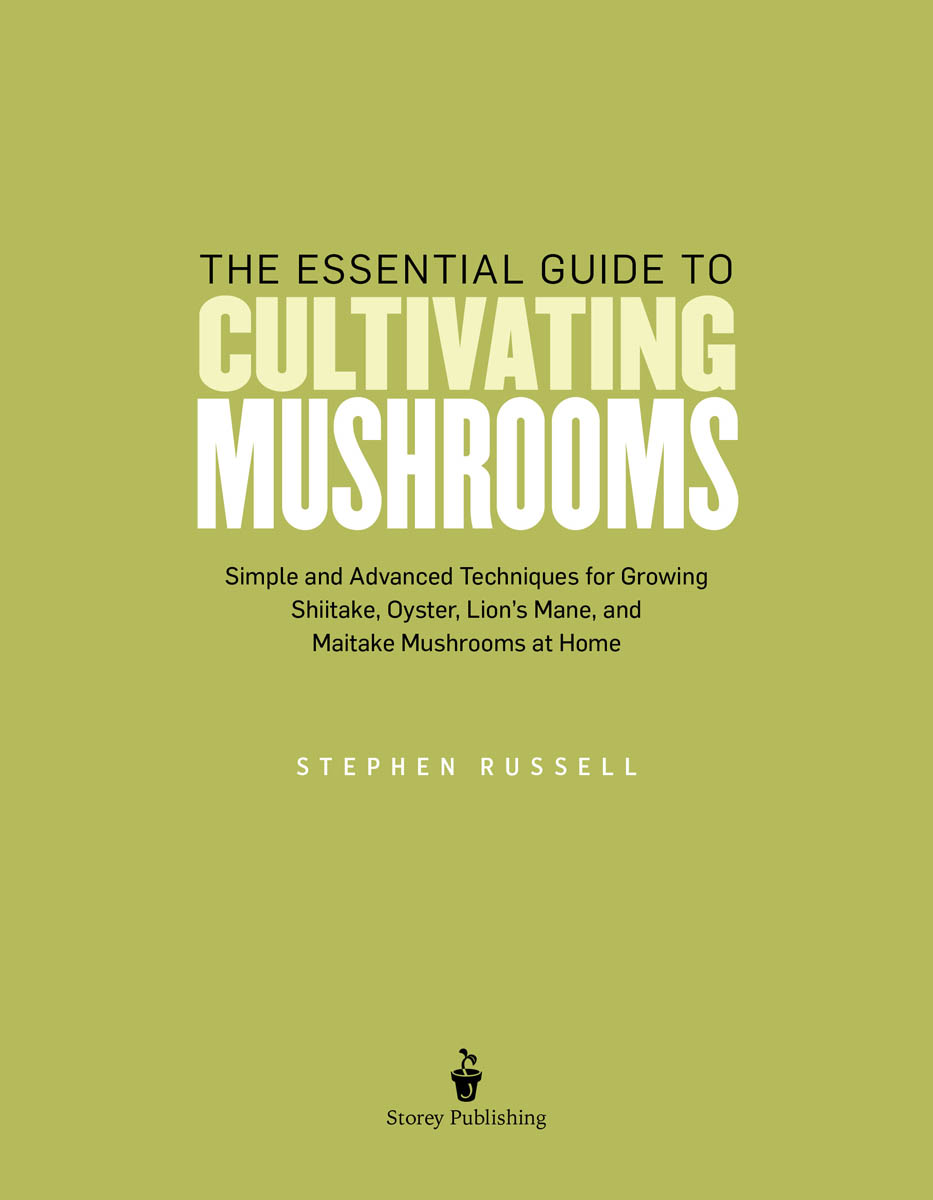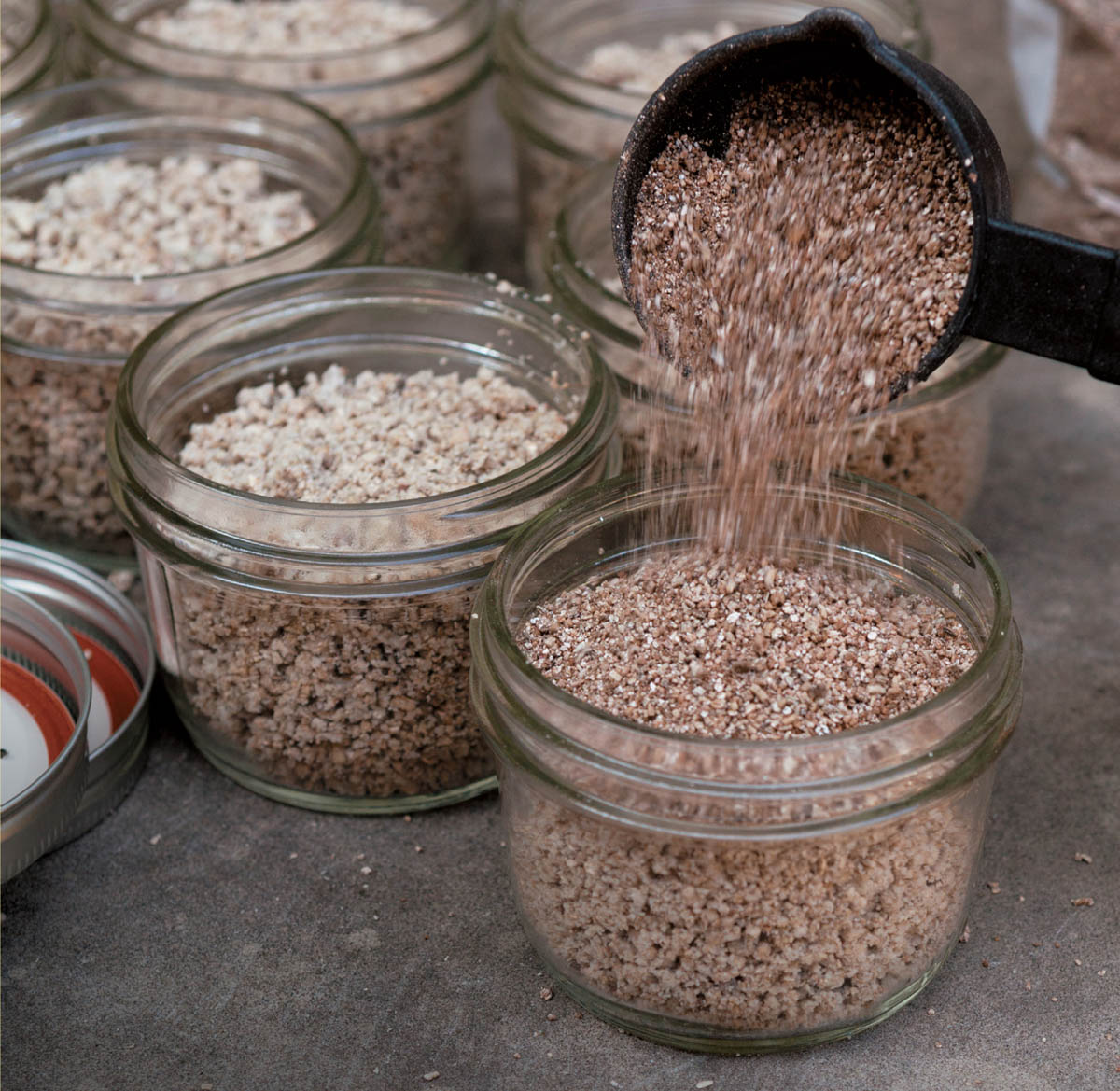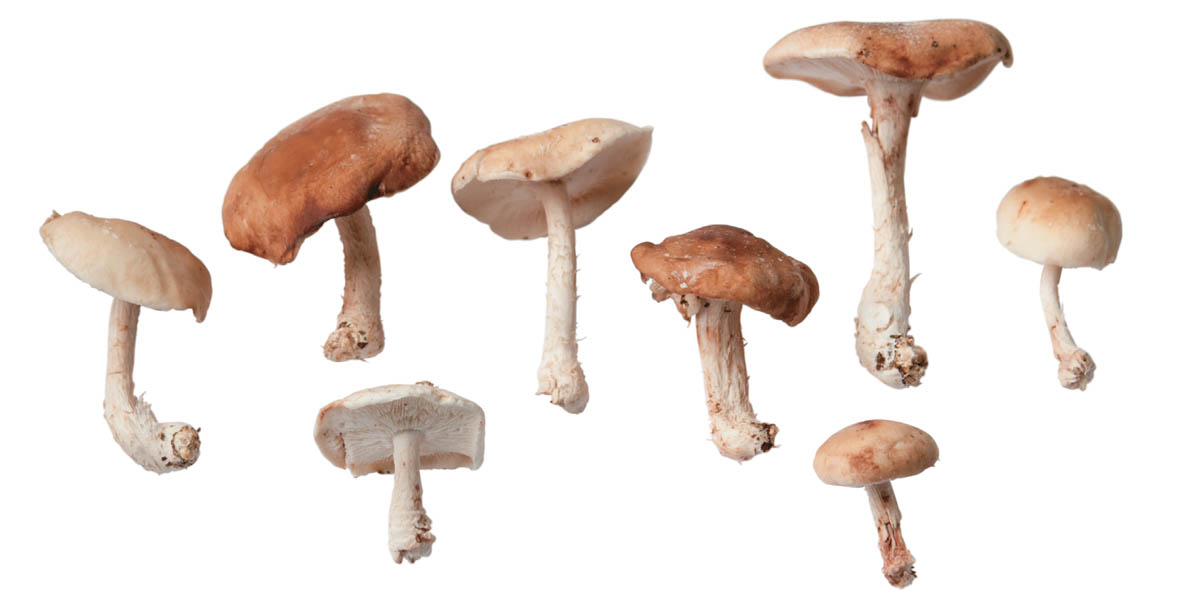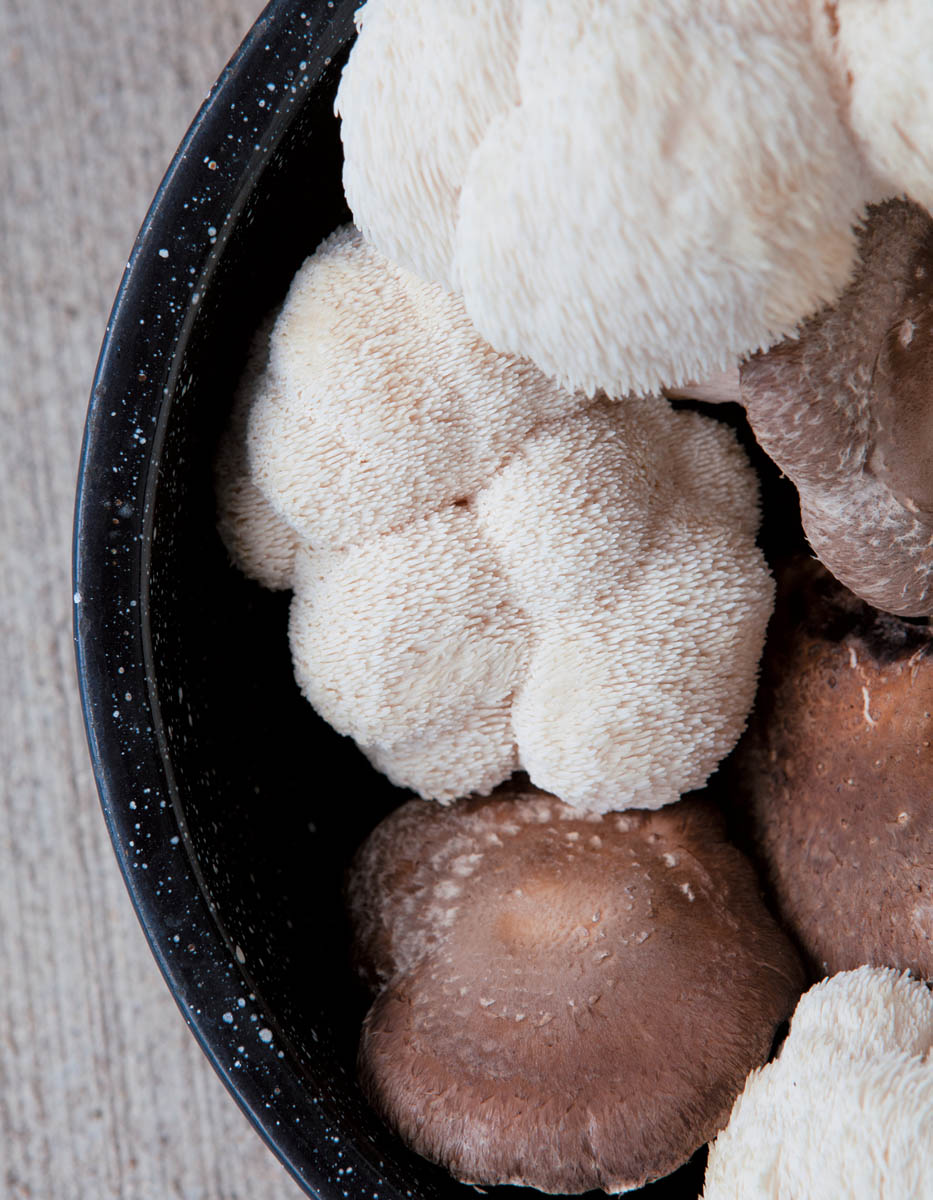Contents
Preface
Deciding to grow mushrooms has turned out to be one of the most rewarding experiences of my life. In many ways, it has shaped my entire lifestyle: it has enlivened my curiosity about the natural world, guided my plans for the future, and helped shape the way I view the planet. Most others I know who have been ensnared by the hobby find it equally compelling. The ultimate intention with this manuscript was to develop the book I wish existed when I first made the decision to become a cultivator.

When I began growing mushrooms a decade ago, the best references were Paul Stametss books The Mushroom Cultivator and Growing Gourmet and Medicinal Mushrooms. They were so influential that I often referred to them as the Old Testament and the New Testament. However, while the Stamets books were extraordinary even revolutionary for mushroom cultivators they did not fully elaborate on many of the most beneficial methods for small-scale, at-home cultivation. They also did not address many of the unique challenges home growers often encounter.
With that in mind, I set out to produce a book of solid methods that readers could replicate for success, or use as a base for their own experimentation. Using the step-by-step methods presented here, hobbyists can successfully grow a supply of mushrooms for their home dinner tables, or fill up their basements with mushrooms to sell at weekly farmers markets. Each chapter includes a troubleshooting section that lists common mistakes or problems that new growers are likely to encounter.
There are several things to keep in mind when reading this book. First, there is no best or right method for growing mushrooms; instead, there are many different paths to the same goal. The best method for one cultivator may be terrible for another, depending on a number of factors, including climate, family situation, cost, species desired, and the availability of materials, time, and space. I have outlined many of these considerations while discussing the various methods. Even if you are familiar with growing plants, remember that working with mushrooms requires a quite different set of processes and conditions. Some of the processes may not become entirely clear until you actually try them and watch them work. Attempting the processes is the best way to learn them.
Second, this book should be approached in a stepwise manner, as many of the basic methods and chapters are building blocks for the more advanced methods. If you attempt the more advanced methods before you have a firm grasp of the basic methods, youll probably introduce a variety of contaminants to your product, resulting in failures that you will not have the experience to diagnose. The most successful mushroom growers take the time to learn the basics and approach the process in a methodical manner.
Experimentation is good, but only if you dont adjust too many variables at the same time. You can expect a certain amount of failure in mushroom cultivation, so if you cant narrow down the source of that failure, then youll learn nothing from the experiment. And try not to let failures get you down. Over the course of time, Ive made nearly every mistake possible, many of which are described here. Try to view them as learning experiences, and then try to avoid repeating them!
My approach to growing mushrooms is based on the science of controlled experiments: I want to replicate my successes and minimize my mistakes. Thats why this book stresses indoor cultivation methods. Growing mushrooms outdoors often involves too many variables its unpredictable and sporadic. It is also seasonal, depending on your climate, so you may only get a couple of harvests a year. Indoor mushroom cultivation, on the other hand, will yield consistent and predictable harvests year round. It is the gold standard of cultivation, but to be able to do it effectively requires a serious commitment of time and learning. If you can make this commitment, the end result is truly rewarding, and you will have gained a significant and marketable skill set that few people have attained.
I hope the information in this book will enrich your life in much the same way it has enriched mine.
Part 1
Basics for Beginners
Chapter 1
Getting to Know Mushrooms
People often ask me, Why mushrooms? They usually ask the question even more insistently when they find that I typically dont eat most of the mushrooms I grow or find in the wild. Until you get to know mushrooms, you may not realize the complexity of the mushroom world. Their world is one of endless fascination and intrigue. Mushrooms have innumerable uses and innumerable stories to tell.
Everyone knows that mushrooms can be used as food, but did you know that you can use mushrooms to make paper, paint, fabric, dyes, and hats? Did you know that there are mushrooms that glow in the dark? Are you aware that mushrooms are miniature chemical factories, and the toxins that fungi produce are used to make citric acid, birth control pills, and penicillin? Did you know that there are zombie mushrooms that can take over the brains of insects, force them to climb upward to the highest point possible in a tree, colonize their bodies, and grow a mushroom all to release their spores? The more I learn about mushrooms, the more enthralled I become.
The Culture of Mushrooms
Mushrooms play many different roles in human life. One of those roles is as a cultivated crop, and thats the primary focus of this book. But as mushroom growers you should also know something about the other roles of mushrooms, because youll certainly encounter them as you explore the intricate and diverse world of the mushroom.
Mushrooms for Food
When most people think of mushrooms, theyre probably thinking of brown Portabellas or White Buttons, the common grocery store mushrooms that many of us enjoy on our salads or hamburgers.
White Buttons and Portabellas are species of the genus Agaricus. These are rarely grown on a small scale because their cultivation is dominated by the major mushroom farms, highly mechanized operations that mass produce mushrooms for low prices that small farms cannot hope to match. Agaricus species mushrooms are grown on a manure-based substrate that must be composted before it can be inoculated. This process can take from weeks to a month or more. After the composting process, the fungi are introduced to the growing area.








